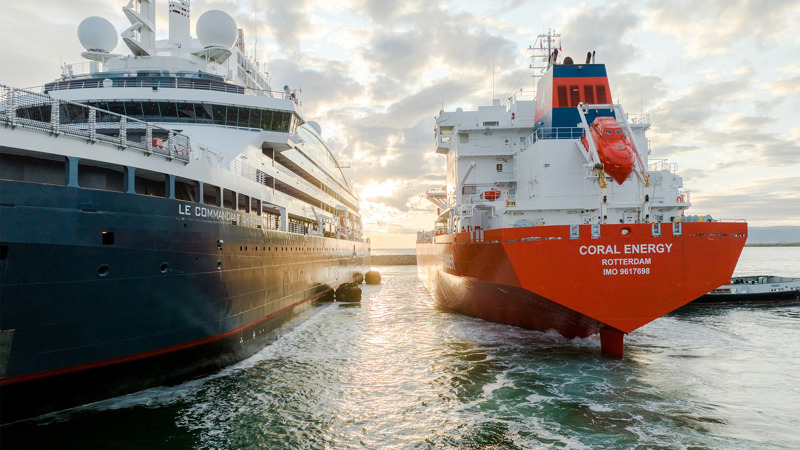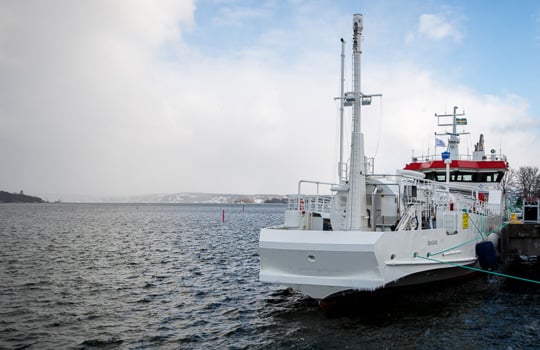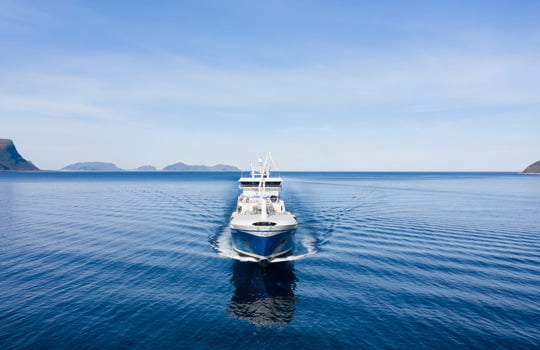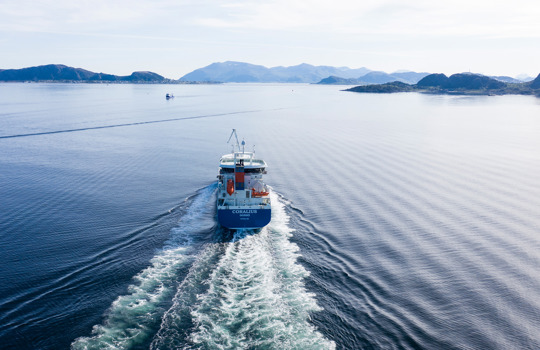Widescale use of synthetic fuels remains unrealistic for the maritime sector
The shipping industry is undergoing a significant transformation due to the green shift and upcoming regulations such as FuelEU Maritime. Despite promising developments in the field of low-emission synthetic fuels, such as hydrogen, methanol, and ammonia, their short-term viability is hindered by immense need for green electricity, low availability, and lack of infrastructure. Methane-based fuels, specifically LNG, LBG, and synthetic methane, which are readily available and future-proof, remain the most potential maritime fuels for shipping companies aiming to reduce emissions.
Maritime shipping contributes up to 3% of the world's total CO2 emissions and 10–15% of global sulfur oxides (SOx) and nitrogen oxides (NOx). Meanwhile, 90% of global cargo is transported by sea.
Consequently, the maritime industry faces increased pressure to transition to low-emission fuels.
Initiatives like FuelEU Maritime 2025 and regulations from the International Maritime Organization (IMO) are compelling companies to explore cleaner fuel options. Moreover, the green transition is gaining momentum due to growing demands for lower emissions from cargo owners and consumers.
Emerging low-emission fuels include green hydrogen, green methanol, green ammonia, synthetic methane, and liquid biofuels. To produce them on an industrial level, much more green electricity is needed than can currently be generated. To concretize, the amount of energy required by the global maritime industry is equivalent to what the entire country of Germany uses in a year. It is unrealistic to assume that such a significant amount of green electricity can be produced in the short term.
"For instance, a transatlantic dry bulk cargo vessel that carries about 300 000 tons of cargo would need a battery weighing 100 000 tons, thus significantly reducing the amount of cargo the vessel could carryven the recharging of this battery would demand as much energy as lighting a major city”, says Jacob Granqvist, Vice President of Gasum Maritime.

“We must rapidly reduce maritime emissions, but due to the immense scale of energy required for long-haul maritime transportations, relying on synthetic fuels or batteries is not feasible now or in the near future.”
Jacob Granqvist, Vice President of Gasum Maritime
Green hydrogen: promises and challenges
One of the most talked about green energy alternatives is green hydrogen. It is produced through the process of electrolysis, which uses renewable electricity to split water into hydrogen and oxygen, emitting no greenhouse gases.
While hydrogen boasts zero emissions when consumed, its production process remains highly energy-intensive. Furthermore, hydrogen's low energy efficiency and potential transportation hazards present obstacles to its widespread adoption on vessels, especially on long-haul shipping.
Ammonia: no infrastructure and inherent toxicity
Ammonia, another potential low-emission maritime fuel, can be synthesized by using green hydrogen, making it a carbon-free option.
However, its inherent toxicity complicates handling, and practical bunkering infrastructure for ammonia is lacking. Moreover, there are no standards nor regulations for how to handle ammonia, and so far, there are no ports that have even given permission to bunker ammonia.
Liquid biofuels: environmentally friendly but expensive
Liquid marine biofuels, derived from organic materials like algae and waste, may offer a carbon-neutral alternative to conventional diesel, depending on the feedstock. They can be used in existing diesel engines, support resource efficiency, and utilize marine fuel infrastructure.
Challenges include high prices, limited scalable feedstock, competition with food production, variable biofuel quality, and energy-intensive production processes.
Green methanol: market still in its infancy
Green methanol is renewably produced from waste biomass, electricity, and captured CO2. Despite lower carbon emissions compared to diesel, its production requires a substantial amount of electricity.
Green methanol is compatible with existing production and distribution systems and can be used in modified engines. However, investing in a methanol-powered vessel without securing sufficient green methanol might lead to counter-productive results in terms of cutting emissions if they end up running the ships with highly-pollutive diesel.

Coral Energy bunkering in Iceland, June 2023. Photo: OZZO
LNG, LBG and synthetic methane: flexible blend options and future-proof
Liquefied natural gas (LNG) can cut emissions in shipping by up to 20% compared to conventional fuels. Renewable liquefied biogas (LBG) reduces lifecycle emissions by up to 90%, promptly aiding compliance with stricter regulations.
The advantages of LNG and LBG, coupled with their lower emissions, lie in their availability and widespread use by shipping companies globally. LNG is available already now for the entire sector, and the methane molecule is also future-proofed: the same engine that burns LNG today can later use LBG or synthetic methane without modifications or installations, further reducing emissions.
Synthetic methane, derived from green hydrogen and captured CO2, offers a carbon-free option. Interchangeable with LNG and LBG, it leverages existing infrastructure despite current availability limitations and electricity demands. In summary, methane-based fuels provide a clean, future-ready choice for immediate emission reduction in shipping.
"While green methanol and ammonia hold promise, significant obstacles such as the huge demand for green electricity, currently hinder their widespread adoption. If only 4% of the annual fuel demand of the global maritime sector were met by synthetic fuels, such as ammonia or methanol, we would need as much green electricity as all the Nordic countries consumes in a year. Unfortunately, this scenario is currently unrealistic," says Jacob Granqvist.



